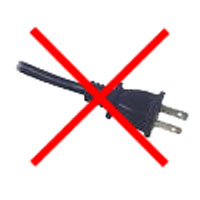 Not quite. Learning music theory chords is a big deal when
it comes to understanding music. However, it's not as hard as it seems at
first. The key is to take them in baby steps; in small pieces. That why we'll
just work with triads, or three note chords for now.
Not quite. Learning music theory chords is a big deal when
it comes to understanding music. However, it's not as hard as it seems at
first. The key is to take them in baby steps; in small pieces. That why we'll
just work with triads, or three note chords for now.
Just as notes are the building block of melodies, chords are
the building blocks of the general tone of a song. Lots of sad sounding songs
will use what we call minor chords. Lots of pretty sounding songs will use
major seventh chords or suspended second chords.
Chords are simply several notes played together as a group.
They can be used to make arpeggios for melodies. They can also be arranged in
different orders called progressions to create movement and direction in a
song.
Let's Start Building!
When building chords, we will start with scales. Each scale
degree receives a number. These numbers will be used to build different kinds
of chords.
C D E F G A B C
1 2 3 4 5 6 7 1
Again, we're just working with triads for right now.
(Remember, baby steps.) A triad is made up of the 1, 3, and 5 of any scale. In
this example, the 1, 3, and 5 would be C, E, and G.
To get different triads, we use different scales:
For a G Major triad, we would use a G Major scale.
G A B C D E F# G
Now we take the 1, 3 and 5 of that scale and we get G B D.
For a G Minor triad, we would use a G Minor Scale
G A Bb C D Eb F G
Now we take the 1, 3, and 5 of that scale and we get G Bb D.
(Note: If you are lost about the minor scales, don't worry
about it. We will learn about these later. They work exactly the same way as
the major scales, so just work with the majors for right now.)
One thing you should do to practice these, or at least get
more familiar with them, is to take several major scales and make major triads
with them. Do this regularly until you can just spout off a scale's triad
without thinking about it.
That's it for Basic Triads
Now you know how to build any major or minor triad. (There
are also diminished triads but again, we're mainly just working with majors.)
There are lots of other chords as well, but they all start with triads. Some of
them will be a triad with some extra notes, and some will be triads with one
note changed. They all come from the same place though, so get used to using
these first.
Comments
Post a Comment